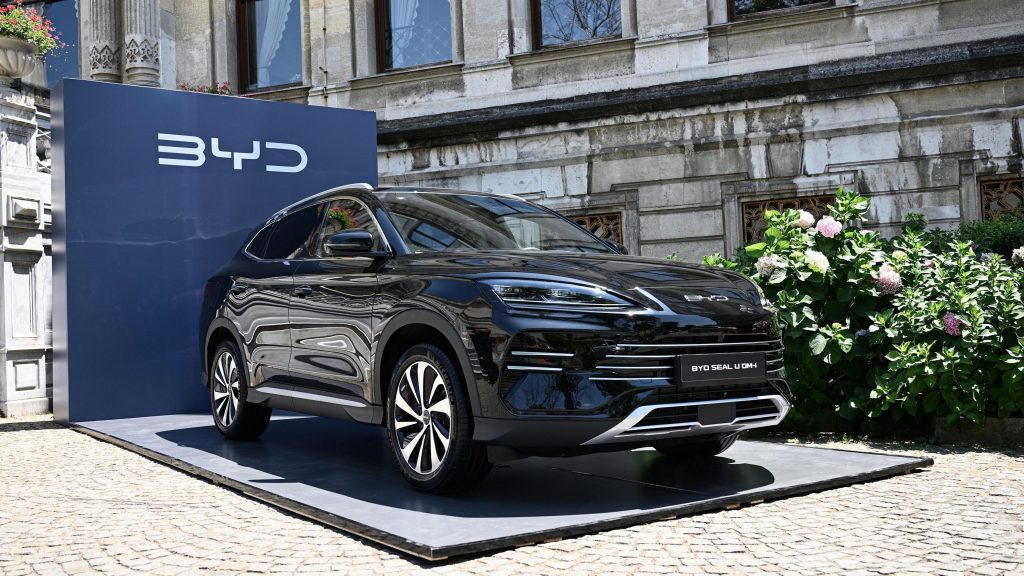China’s BYD overtakes Tesla revenue for first time
3 min read

Chinese electric vehicle (EV) manufacturer BYD has achieved a significant milestone, reporting quarterly revenues that exceed those of Tesla for the first time. Between July and September, BYD’s revenues soared to over 200 billion yuan (approximately $28.2 billion or £21.8 billion), marking a 24% increase compared to the same period last year. This impressive growth outpaced Tesla, which recorded a quarterly revenue of $25.2 billion.
Despite BYD’s revenue success, Tesla maintained its lead in vehicle sales, delivering more electric cars than its Chinese rival in the third quarter. This ongoing competition highlights the dynamic landscape of the global EV market, particularly in China, where government incentives are driving consumers to transition from gasoline-powered vehicles to electric and hybrid models.
The surge in BYD’s revenue can be attributed in part to robust government support aimed at promoting EV adoption. Recent months have seen an uptick in sales, with BYD achieving a record number of monthly sales in September, reinforcing its status as China’s top-selling car manufacturer. These results indicate a strong demand for electric vehicles in the country, fueled by initiatives to make greener vehicles more accessible.
However, the rapid growth of Chinese EV manufacturers like BYD has not come without challenges. Internationally, there is a rising backlash against the Chinese government’s support for domestic car makers. Just this week, the European Union implemented tariffs as high as 45.3% on imports of Chinese-made electric vehicles, a measure aimed at countering perceived unfair advantages resulting from state subsidies.
Chinese EV makers are already facing substantial tariffs in the United States and Canada, where a 100% tax on imported vehicles has been established. These tariffs reflect growing concerns about the competitive landscape and the ability of local manufacturers to thrive against subsidized foreign competitors. The EU’s action is part of a broader strategy to protect its automotive industry, which fears being undercut by lower-priced Chinese vehicles.
In addition to tariffs, there are other signs of a shift in the global EV market. Official data from China indicated that as of last week, 1.57 million applications had been submitted for a national subsidy program offering $2,800 for each older vehicle traded in for a more environmentally friendly option. This program is one of several government incentives aimed at encouraging the adoption of electric vehicles, further bolstering demand within China.
China’s government has been banking on high-tech products, including electric vehicles, to help stimulate its economy, which has shown signs of slowing down. The EU represents the largest overseas market for China’s electric car industry, making the recent tariff measures particularly impactful. As BYD and other Chinese brands like NIO and Xpeng begin to make inroads into international markets, concerns about competition and pricing strategies have become more pronounced.
The rapid expansion of the Chinese automotive sector over the past two decades has positioned companies like BYD to challenge established players globally. However, this growth has sparked fears in Europe and North America that local manufacturers may struggle to compete with the lower prices and government support enjoyed by their Chinese counterparts.
As the global EV market continues to evolve, the rivalry between BYD and Tesla is set to intensify. The challenge for Tesla will be to maintain its sales leadership while competing against a rapidly growing domestic rival in the world’s largest EV market. Meanwhile, BYD will need to navigate international trade barriers and perceptions of unfair competition as it seeks to establish itself as a formidable player on the global stage.
In conclusion, BYD’s achievement in surpassing Tesla’s revenue marks a significant moment in the electric vehicle industry, reflecting the changing dynamics of competition between Chinese and Western automakers. As both companies look to the future, the landscape of the EV market will be shaped by consumer demand, government policies, and international trade relations.